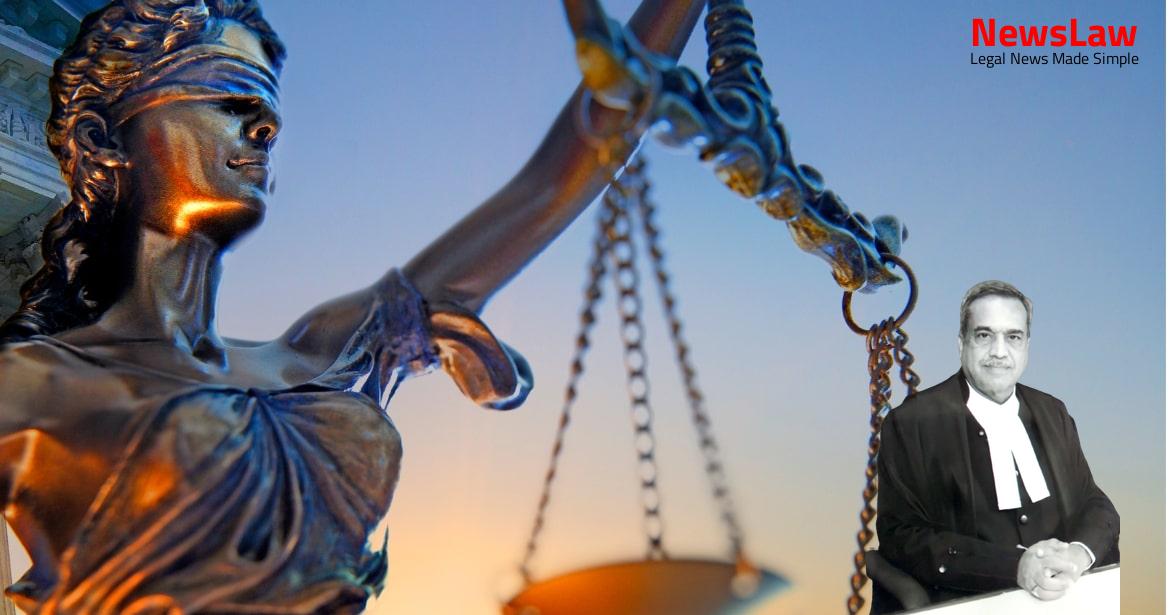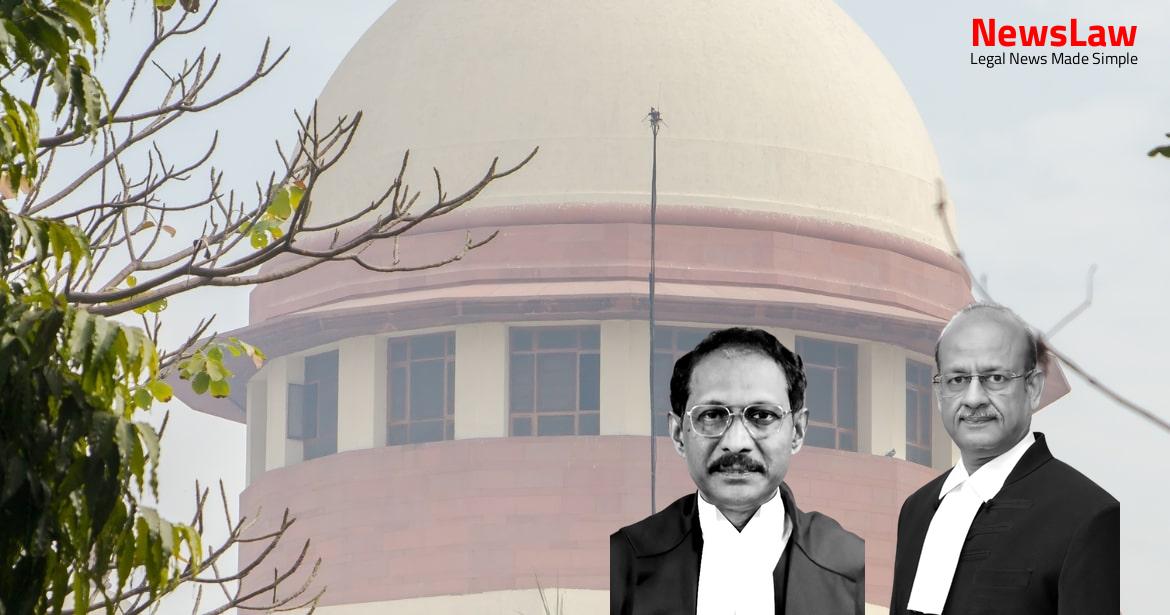In a recent legal case, the High Court’s in-depth legal analysis regarding retirement age enhancements raised questions about the boundaries of judicial review and the extent of legal authority. The court’s thorough examination of the case highlighted key aspects of policy-making, the interpretation of government orders, and the application of legal principles such as legitimate expectation and promissory estoppel. Let’s explore the nuances of the High Court’s legal analysis and its implications in this summary.
Facts
- A writ petition was filed by the first and second respondents to challenge the State government’s order rejecting the proposal to enhance the retirement age.
- The State government deferred the decision on the proposal on 2 September 2005.
- The New Okhla Industrial Development Authority (NOIDA) recommended an increase in the retirement age of its employees on 29 June 2002.
- The State government issued a notification on 28 November 2001 enhancing the retirement age of government servants to sixty years.
- On 30 September 2012, the Government of Uttar Pradesh approved the enhancement of the retirement age to sixty years for NOIDA employees.
- The Authority framed the New Okhla Industrial Development Authority Service Regulations, 1981 governing recruitment and service conditions.
- The High Court directed retrospectively on the increase in the age of retirement from 29 June 2002.
- The High Court’s decision was based on a recommendation from NOIDA in July 2012, not the earlier rejected recommendation from June 2002.
- The High Court granted relief not prayed for by the petitioners and contradicted an earlier judgment from 17 January 2012.
- The Government Order from September 2012 clearly stated that the increase in retirement age would have immediate effect with no retrospective impact.
- The intention of the Government Order was to have no retrospective effect, as clearly stated in the order.
Also Read: Electoral Malpractices in Mayor Election
Issue
- Whether the High Court has overstepped its boundaries in terms of judicial review
- The core issue pertains to the extent of power exercised by the High Court
- Questioning whether there has been an overreach in terms of judicial authority
Also Read: Balancing Power and Transparency: Electoral Bonds Struck Down, Disclosure Mandated
Arguments
- Service Regulations and amendments to them are considered subordinate legislation.
- Inability of writ petitioners to secure interim orders should not benefit respondents.
- Impugned judgment’s interpretation has broad implications and is legally unsustainable.
- High Court misunderstood NOIDA’s stance on bearing financial burden of increased retirement age.
- No portion of amended Regulations, like para 1(ii), should be struck down unless ultra vires.
- High Court deemed retirement age increase effective from June 29, 2002.
- Employees in 2004 sought arrears considering retirement age as sixty.
- Referencing Dayanand Chakrawarthy to argue for ‘no work no pay’ principle exemption is misguided, leading to retired employees demanding arrears.
- Ms. Tanya Shree appeared on behalf of the respondents to oppose the submissions in the appeals.
Also Read: Recall of Resolution Plan Approval: Legal Analysis
Analysis
- Enhancement of age of retirement was planned prospectively as per government orders.
- The decision to enhance the age of retirement is considered a matter of policy.
- The High Court’s interference was seen as stepping into the realm of policy-making, which is the domain of the executive.
- The financial impact of the age enhancement was to be assessed by each organization and then seek approval from the State government if they could bear the burden.
- The High Court’s view on the delay in decision-making was in reference to a prior resolution in 2005 that was rejected in 2009.
- The State government’s decision to increase the retirement age of its employees had left the decision to public sector corporations based on financial implications.
- The decision of the State government to enhance the retirement age must be made effective from the date of approval by the State government, not from the date of a preliminary resolution by an authority like NOIDA.
- The High Court had observed that the decision on retirement age should align with when NOIDA resolved to bear the financial burden or a date deemed appropriate by the State government.
- The doctrine of legitimate expectation was found not applicable in this case.
- The government order was granted prospective application with no inferred retrospective effect, as per the regulations and procedures in place.
- The principle of promissory estoppel did not apply as NOIDA’s recommendation was subject to State government approval, and not a binding promise.
- The High Court’s reasoning on the arbitrariness of the government order and the refusal of retrospective benefits was based on incorrect factual premises.
- The decision of the State government related to retirement age enhancements over the years was made considering the service exigencies in each organization.
- In State of Uttar Pradesh v. Dayayanand Chakrawarthy, it was established that if the employer prevents the employee from performing his duties, the employee cannot be blamed for his absence from duty, and the principle of ‘no pay no work’ does not apply.
- The Board resolution of 9 July 2012 proposed an immediate increase in the retirement age of employees, and the authority is now estopped from retracting the resolution and denying the benefit of the age enhancement.
- The court ruling in State of Jharkhand v. Brahmputra Metallics Ltd., Ranchi elaborated on the doctrine of legitimate expectation, grounded in fairness and reasonableness.
- Previous cases involving UP Jal Nigam employees like Harwinder Kumar v. Chief Engineer, Karmik, held that employees approaching courts are entitled to full salary until the age of sixty due to legitimate expectation.
- The court emphasized that although the doctrine of promissory estoppel cannot be used against NOIDA, Regulation 31 of the UP Jal Nigam Services of Engineers Regulations applies to the employees.
- The court upheld in Dayanand Chakrawarthy that different retirement ages based on recruitment mode were discriminatory, and retrospective effect was given to the age enhancement from the original resolution date in 2002.
- An exception to the rule of promissory estoppel is only available in matters of procedure, as noted in relevant case laws.
- The High Court’s assertion that the Government should have acted instantly upon receiving the resolution is deemed factually incorrect, as the Government Order of 30 September 2012 refers to a recommendation issued on 17 July 2012.
- Employees did not work in service after their date of superannuation
- Representation made to Chief Minister before superannuation date is not relevant
- Argument for enhanced age of superannuation is not valid
- The observation should be understood in the context of the specific factual situation of the case
Decision
- 24 Writ Petition dismissed
- Appeals allowed, impugned judgement and order set aside
- No order as to costs
- Respondents moved High Court on 31 August 2012, no interim relief granted
- Respondents attained superannuation
- Pending application(s) disposed of
- High Court’s judgement dismissing challenge to government order dated 30 September 2012 has finality
Case Title: NEW OKHLA INDUSTRIAL DEVELOPMENT AUTHORITY Vs. B.D. SINGHAL (2021 INSC 334)
Case Number: C.A. No.-002310-002310 / 2021



